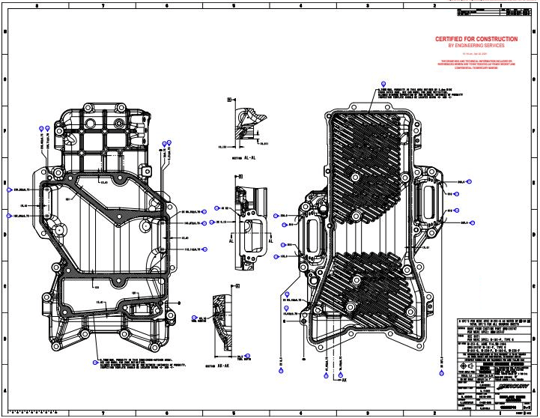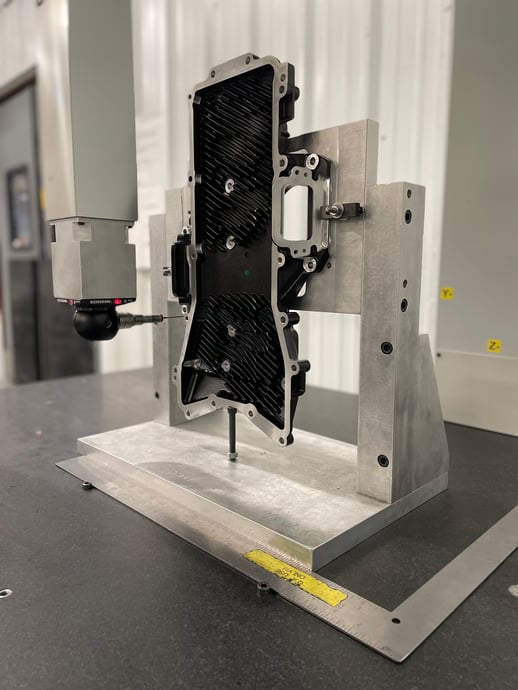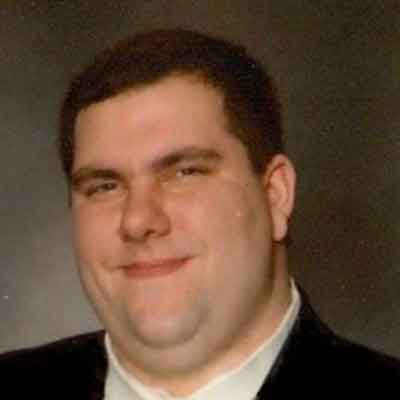Do you rely on a request for quote (RFQ) to get accurate pricing from your CNC machining partners? This vital process not only results in a quote but also provides details about timelines, capabilities, machining techniques, external services, and more. It also serves as a guide after the work has been awarded.
Let’s break down the steps within the manufacturing quote process, explore how CNC machine shops handle them, and see how a “top shop” like Stecker provides added value during each step.
Prefer to watch a quick video outlining Stecker’s manufacturing RFQ process? Watch it below!
Step #1: Submit Part Drawings & Specifications
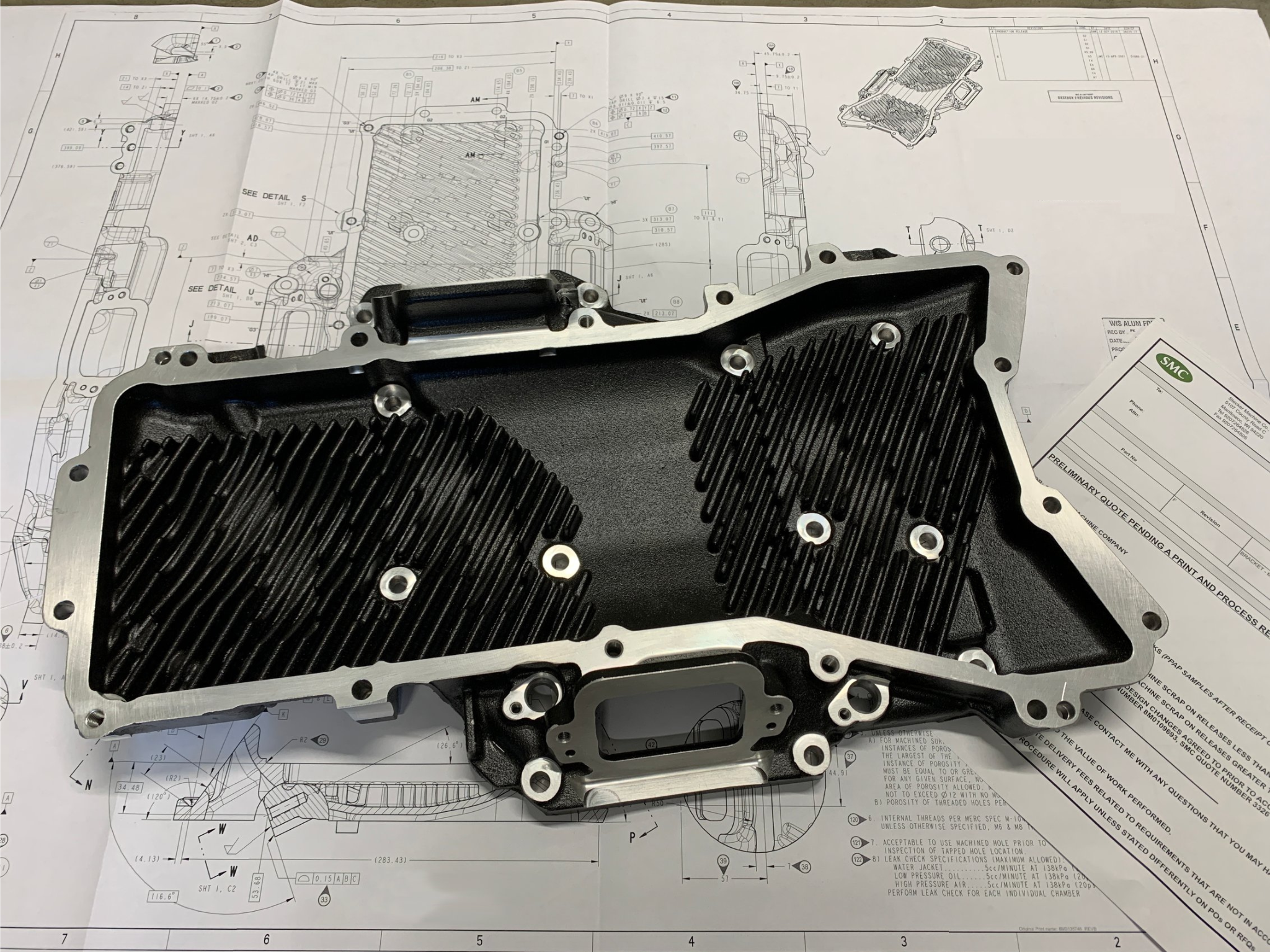
Typically, customers in the manufacturing industry email a technical drawing package or send it via our website or Dropbox for downloading. If the custom part already exists, it’s preferable to also send an actual sample to the CNC shop for evaluation.
A typical RFQ package includes:
- Blueprint
- CAD model
- Material specs and provider (customer or shop)
- Required specifications
- Annual quantity and timeline
- Required processes (machining plus pressure testing, assembly, etc.).
|
Step #2: CNC Shop Conducts Internal Review
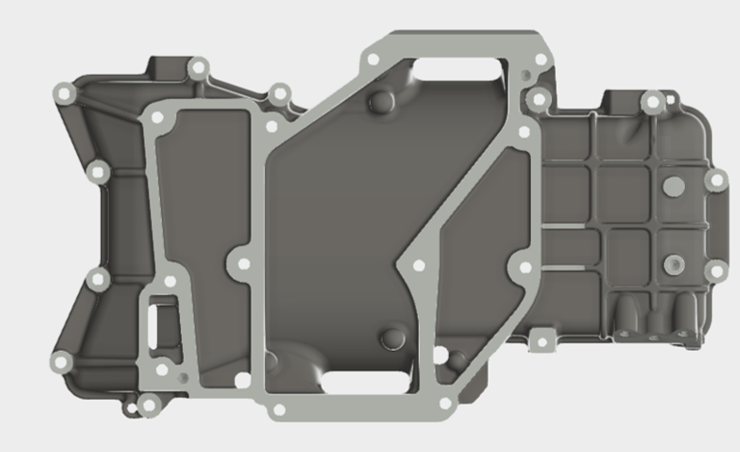
Experienced CNC shop team members review the package, starting with the sales manager who determines feasibility based on the shop’s capabilities and expertise. Cost-effective alternatives may be suggested, such as different materials or automation, to help the customer realize cost savings or improve manufacturability.
Blueprints are reviewed for any inconsistencies, tight tolerances, concerns, and process challenges. While an engineering department’s insights are involved throughout the RFQ process, their input is especially important during these initial steps.
Complexity and volume determine how the parts should be processed. Armed with this information, an estimator in collaboration with the engineers and dedicated estimating software conducts a tool-by-tool, operation-by-operation time study.
Generating in-depth estimated cycle times is critical. The CNC machine shop relies on cycle times to determine operator capacity, equipment needs, and processes.
While replying to an RFQ doesn’t include the same level of detail as manufacturing the machined parts, it uses the same steps as the actual process design. Strict attention to detail creates a trusted and successful path, guiding every operation later.
Before developing a quote, the CNC team has the important task of determining whether the RFQ warrants a reply based on the internal review. One key aspect during that review is finding a good fit between the customer and the CNC machine shop.
What’s a good fit? It includes matching the project’s needs with experience, material knowledge, capabilities, tooling, service, and more.
|
Step #3: Vendor Partner Vetting
In addition to reviewing internal capacity and capabilities, external value-added services and supply chain partners are accounted for in a quote. The CNC shop must obtain answers to questions like:
- Does the part need to go to an assembly operation?
- What tooling needs to be designed and developed?
- Does it have to get pressure tested or balanced?
- Which partnering foundries and service providers need to be included?
- What about painting, coating, or other surface finishes?
Vendors and secondary contract manufacturers deemed a good fit are asked to reply to accurately complete the RFQ. Those within a trusted and well-managed supply base add confidence and help create seamless projects. A supplier list should be audited annually to ensure reliability.
|
Step #4: CNC Machining Quote Submission
Replying to an RFQ is a fine line. If something is misquoted, the CNC machine shop loses money; if the project is over-quoted, the work isn’t awarded to that shop. That’s why RFQs must reflect numbers that are as realistic as possible.
After all the numbers are reviewed, including some aspects not previously mentioned (packaging, scrap, logistics) it’s all turned into a price that is submitted to the customer.
Even then, the quote may include clarifying statements that could affect overall costs. Perhaps tolerances need to be reviewed, or the print is drawn incorrectly. Additional questions may need to be answered after the quote is considered.
|
Step 5: Customer Quote Review
Now, it’s your turn to take the reins. Review the quote and talk with us to go over any questions or seek clarity on timelines, DFM, material options, and pricing. Once everything is finalized and agreed upon, we begin the process of producing your parts on time, to spec, and within budget.
One way we deliver on our promises is by following Lean manufacturing practices. Learn more about our approach to CNC machining and ensuring your project is a success by downloading our guide on The Benefits of Lean Manufacturing in Machine Shops. Then, contact us to talk through your CNC machining challenge.

